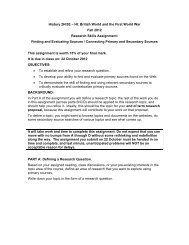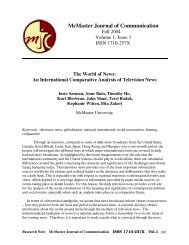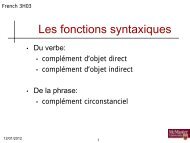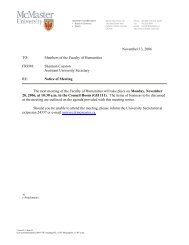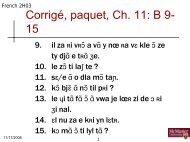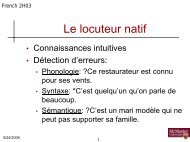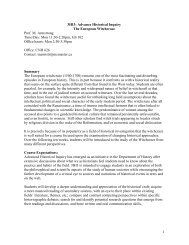The Syntax of Givenness Ivona Kucerová
The Syntax of Givenness Ivona Kucerová
The Syntax of Givenness Ivona Kucerová
You also want an ePaper? Increase the reach of your titles
YUMPU automatically turns print PDFs into web optimized ePapers that Google loves.
<strong>The</strong> example in (58) is felicitous in the following two contexts:<br />
(59) Context I: only books given<br />
What will happen to the books?<br />
(60) Context II: everything given except for sell<br />
What will Marie do with the books?<br />
Thus, there is one syntactic structure that can be interpreted in two different ways. <strong>The</strong><br />
interpretations differ only in the number <strong>of</strong> G-operators in the structure. Either (i) there is<br />
only one operator, terminating at VP, or (ii) there are two different G-operators – one per<br />
propositional domain. 15<br />
(61) Context I: One G attached to the main spine:<br />
TP<br />
Mary<br />
T<br />
TP<br />
will<br />
vP<br />
books<br />
VP <br />
G<br />
terminating point<br />
VP<br />
VP<br />
sell t books<br />
(62) Context II: Two Gs attached to the main spine:<br />
terminating points<br />
TP <br />
Mary<br />
TP<br />
G<br />
TP<br />
T<br />
vP<br />
will<br />
VP <br />
books<br />
VP<br />
G<br />
VP<br />
sell<br />
t books<br />
15 I assume that ‘will’ is not marked for givenness, otherwise the structure would have to contain three<br />
G-operators.<br />
106






